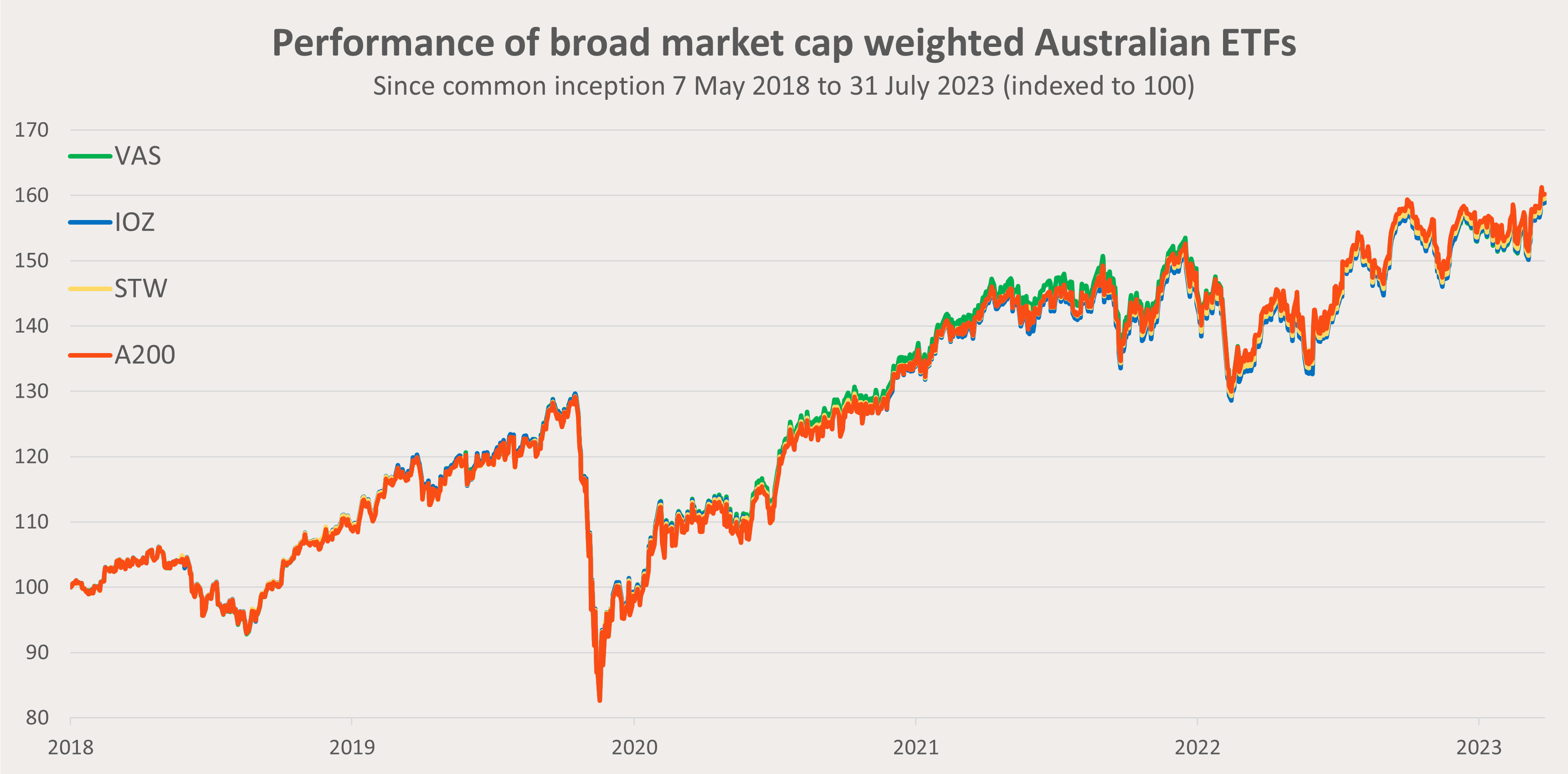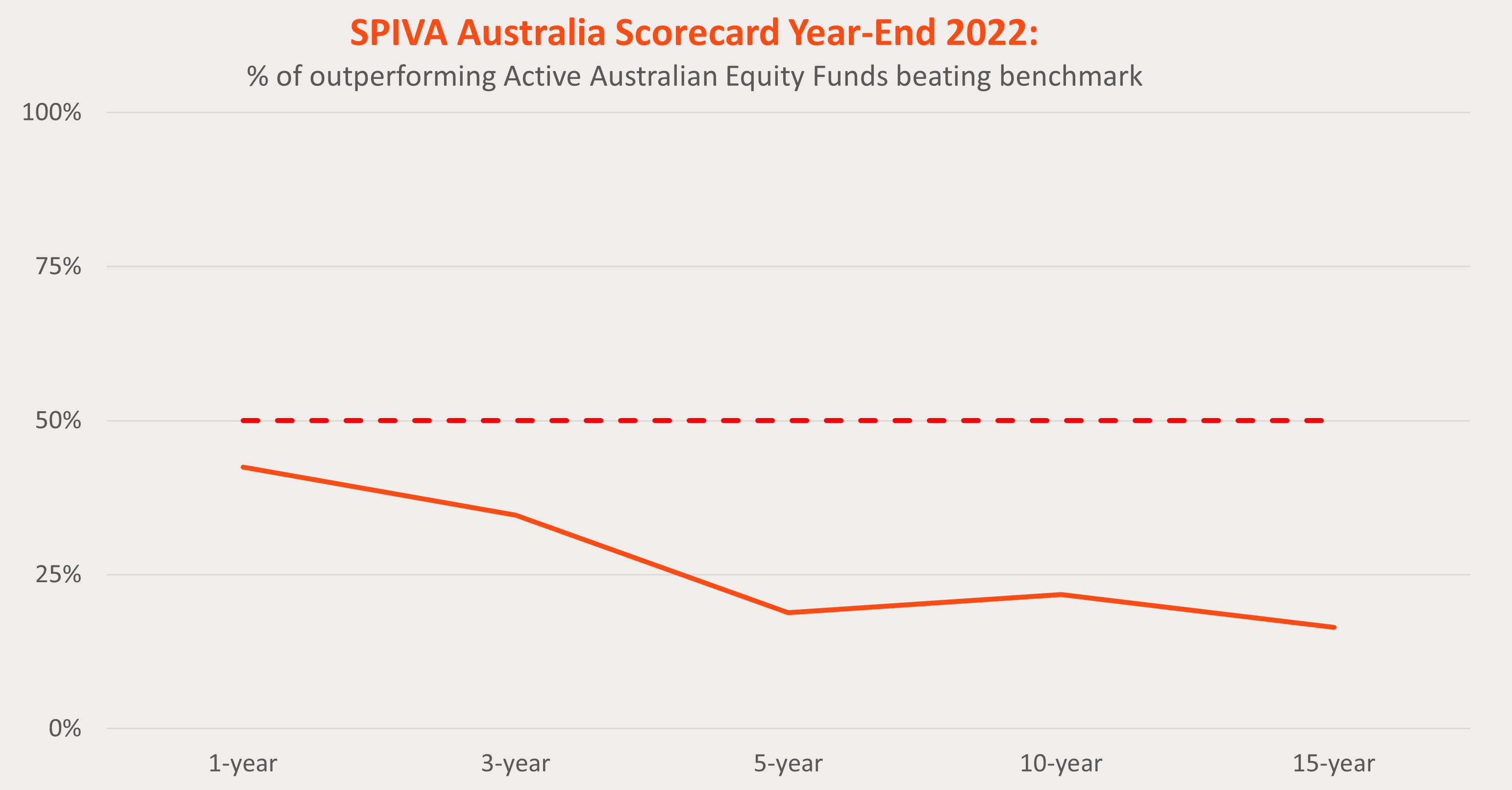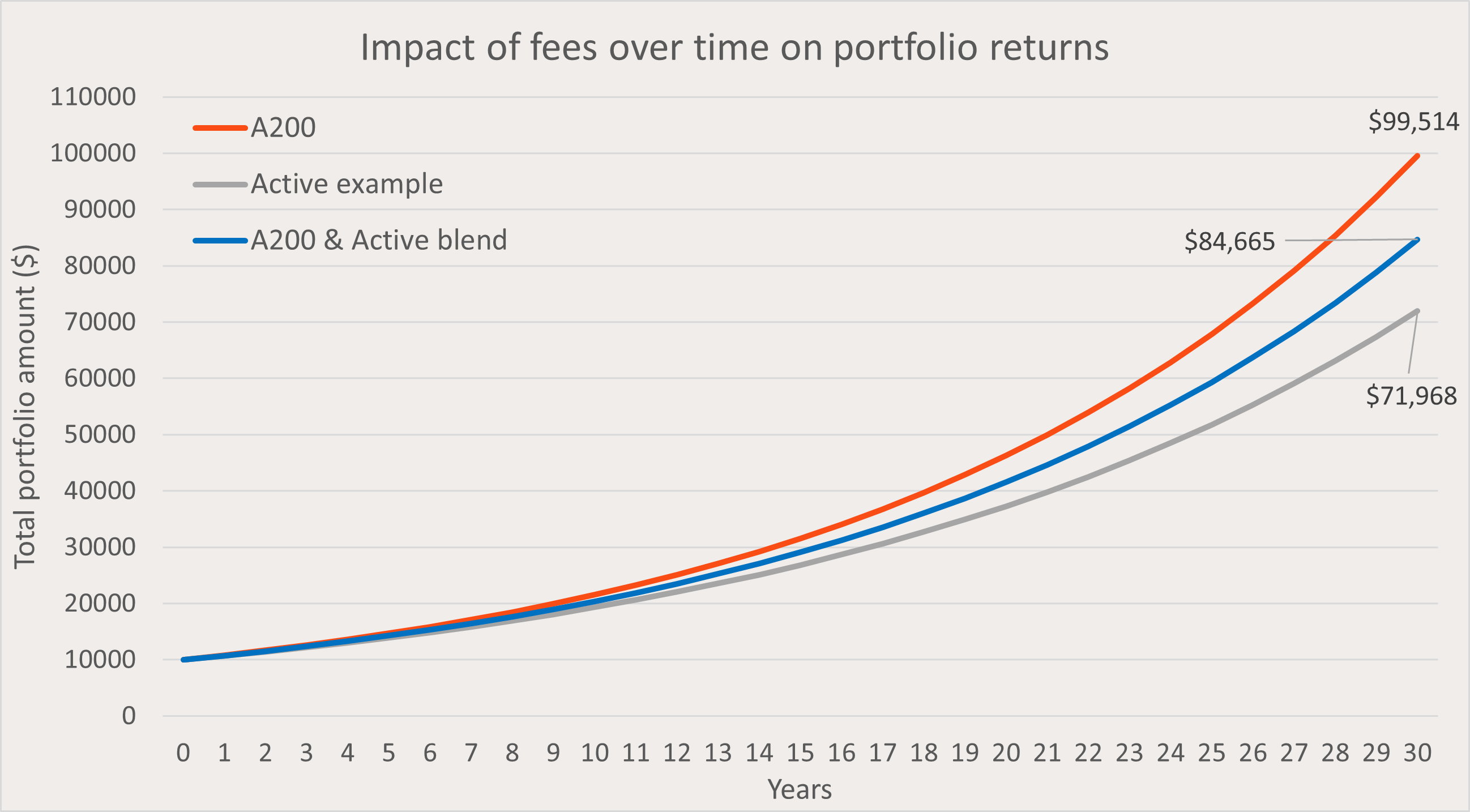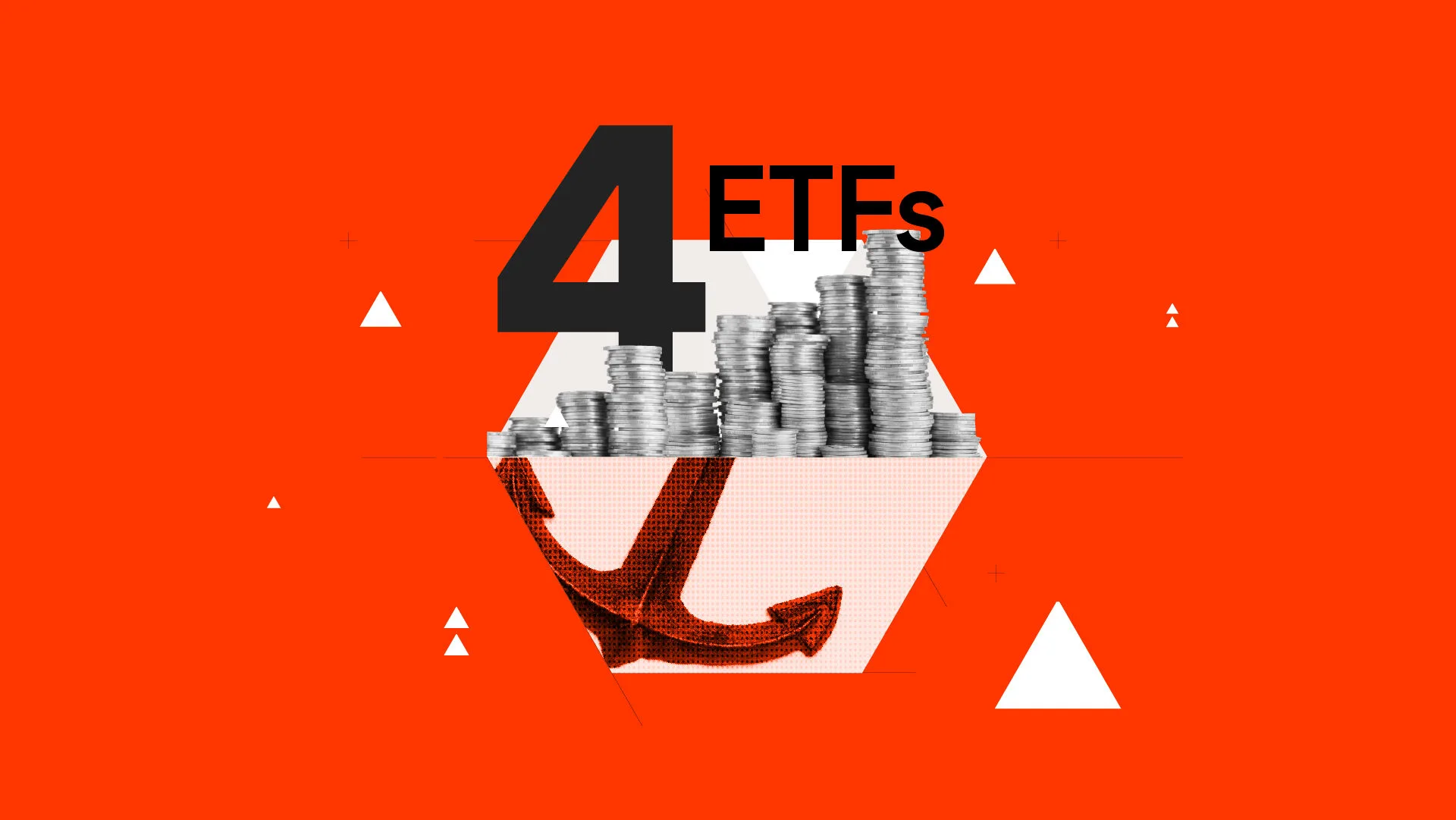Economic & Market Outlook: H1 2026
6 minutes reading time
- Australian shares
This information is for the use of financial advisers and other wholesale clients only. It must not be distributed to retail clients.
With a management fee of just 0.04% p.a., Betashares Australia 200 ETF (A200), which was awarded Passive Equity Fund of the Year in Lonsec’s 2023 Fund Manager of the year awards, is the lowest cost Australian equities ETF in the world.*
A200 aims to track the Solactive Australia 200 Index, before fees and expenses. The Solactive Australia 200 Index provides exposure to the Australian stock market, holding the largest 200 securities by free float market capitalisation.
Due to the similar nature of broad market Australia top 200 and 300 tracking ETFs and A200’s lower fee the fund has been the best performing broad market Australia top 200 or 300 tracking ETF since its inception.

 Source: Bloomberg, total return gross dividends. *A200 fund inception date is 7 May 2018. Table performance shown as at 31 July 2023. Betashares Australia 200 ETF (A200), Vanguard Australian Shares Index ETF (VAS), iShares Core S&P/ASX 200 ETF (IOZ), SPDR S&P/ASX 200 ETF (STW). Past performance is not indicative of future performance.
Source: Bloomberg, total return gross dividends. *A200 fund inception date is 7 May 2018. Table performance shown as at 31 July 2023. Betashares Australia 200 ETF (A200), Vanguard Australian Shares Index ETF (VAS), iShares Core S&P/ASX 200 ETF (IOZ), SPDR S&P/ASX 200 ETF (STW). Past performance is not indicative of future performance.
Over the past decade, we have seen a significant flow in funds under management (FUM) from Australian actively managed domestic equity funds to passive alternatives. In 2013, 79% of FUM was held by active managers with just 21% in passive funds. By June 2023, this had shifted to 53% and 47% respectively1. This is likely attributable, at least in part, to performance and fees.
Would you have been better in an active or passive Australian equity fund?
For 20 years, S&P Dow Jones Indices have been reporting on the performance of active managers against passive benchmarks. The data allows us to evaluate active manager outperformance over the benchmark each year, as well as how many managers have generated persistent outperformance over longer timeframes.
Claims that increasing interest rates and heightened economic uncertainty would lead to active manager outperformance in 2022 appear to have been misplaced. Last year, only 42% of Australian equity active managers outperformed the benchmark. The proportion of active funds outperforming over a 5-year period shrank to 19%.

Source: S&P Dow Jones. Past performance is not indicative of future performance.
Why fees matter
Fees, like returns, compound over time and can meaningfully impact portfolio returns. A simple example shows just how significant this impact can be.

Source: Betashares. Illustrative only, using certain assumptions. Actual results may differ.
Assume an initial investment of $10,000 returning 8% p.a. pre-fee over a 30-year time horizon, a passive fund fee of 0.04% p.a., and an active fund fee of 1.20% p.a. (based on the average Australian broad market active manager2). Over a 30-year period the passive fund would grow to $99,514 compared to just $70,964 for the active fund; a 40% difference.
Alternatively, blending the passive fund into an existing portfolio of active funds, with the same average management fee of 1.20% p.a., could also have a material impact. A 50/50 blend would result in an end portfolio value of $84,665, 19% above the active only portfolio, and an all-in fee reduction from 1.20% to 0.62% p.a.
Given the difficulty in choosing active managers who outperform passive benchmarks, and the impact of fees, we believe low-cost ETFs like A200 may be better suited for long-term portfolio allocations.
Where can A200 fit in a portfolio?
A200 is designed to be a cost-effective core allocation for the Australian equities portion of a portfolio. Its benefits include:
- Lower all-in fees: Implementing with A200 can reduce ongoing fees in a portfolio.
- Tax-efficiency: A200 offers potential tax efficiencies over active and unlisted funds due to the potential for lower turnover and other efficiencies of an ETF’s structure.
- Diversification: A200’s index is broadly diversified across the Australian equity market.
You can find more information on A200 at its fund page here.
A200 is rated ‘Highly Recommended’ by Lonsec. You can request the research reports from your BDM or by filling in the form under the following link.
For more information on Betashares ETF platform availability please use the following link.
There are risks associated with an investment in A200, including market risk, security-specific risk, industry sector risk and index tracking risk. An investment in the Fund should only be made after considering your client’s particular circumstances, including their tolerance for risk. For more information on risks and other features of the Fund, please see the Product Disclosure Statement and Target Market Determination, both available at www.betashares.com.au.
The Lonsec Ratings (assigned 31 October 2022) presented in this document is published by Lonsec Research Pty Ltd ABN 11 151 658 561 AFSL 421 445. The Rating is limited to “general advice” (as defined in the Corporations Act 2001) and based solely on consideration of the investment merits of the financial product. Past performance information is for illustrative purposes only and is not indicative of future performance. It is not a recommendation to purchase, sell or hold any Betashares fund, and you should seek independent financial advice before investing in this product. The Rating is subject to change without notice and Lonsec assumes no obligation to update the relevant document following publication. Lonsec receives a fee from the Betashares for researching the product using comprehensive and objective criteria. For further information regarding Lonsec’s Ratings methodology, please go to http://www.lonsecresearch.com.au/research-solutions/our-ratings.
* Other costs, such as transaction costs, may apply. Refer to the Product Disclosure Statement, available at https://www.betashares.com.au/fund/australia-200-etf, for more information.
1. Morningstar Direct. Universe includes Morningstar Categories: Australia Fund Equity Australia Large Blend, Large Growth, Large Value, and large geared. Data point used is “Net Assets – Share Class (monthly)” for December 2013 and June 2023.
2. Morningstar Direct. Includes Morningstar Category: Australian Fund Equity Large Blend, Large Growth, Large Value. As at 4th May 2023.



